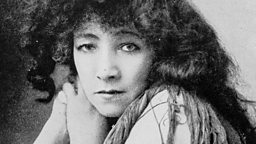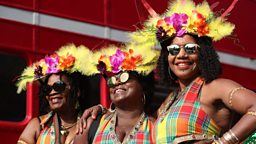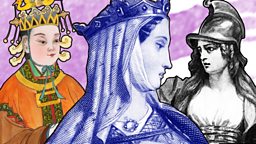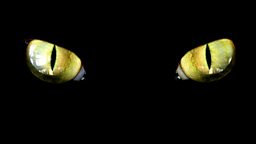Mmmm... A history of chocolate in 10 quick facts
It’s been eaten by people for centuries, it’s loved by almost everyone who tastes it, and its scientific name literally means "food of the gods".
There’s no question that chocolate is a pretty extraordinary substance, and as the You’re Dead To Me podcast discovers, it has a fascinating history too.
So, before you consume any more cocoa-based confectionery, here are a few things we learned from this latest episode…

You're Dead To Me
-

The History of Chocolate
Listen and download the podcast now.
1. The consumption of cacao dates back over 5,000 years
Based on archeological finds, it’s thought that people from Ecuador’s ancient Mayo-Chinchipe culture ingested a cacao-based substance as far back as 3,300 BCE. However, it’s not until the Maya people, whose civilisation peaked between 250 and 850 CE, that we find the first evidence of humans consuming chocolate in a more modern form, as a hot drink. It went on to be popular with the Aztecs too, who dyed it red with a substance called achiote.
2. It really is the "food of the gods"
The scientific name for chocolate is theobroma cacao, which translates as "food of the gods". This title was given to it in the mid-1700s by Carl Linnaeus, the Swedish naturalist who came up with our system for classifying animal and plant species.
3. Britain’s first shipment of chocolate was mistaken for sheep poo
Britain might have had a taste of chocolate a little earlier if it weren’t for a case of mistaken identity. When a Spanish shipment of cocoa beans veered off course and was seized off the coast of Britain in the 16th century, its captors assumed the contents were sheep droppings and burned it.

4. The Pope had to stop priests arguing about chocolate
In the 17th century, a heated debate blew up between two orders of Catholic monks over whether or not chocolate was officially a drink – and could therefore be consumed on days when they were fasting. Eventually Pope Alexander VII intervened, decreeing that chocolate was indeed a drink (and presumably bringing joy to many hungry monks).

5. Chocolate used to be associated with rebellion
While in France and Spain chocolate was initially a drink reserved for the privileged, in England it was consumed by intellectuals and political thinkers. In the 1660s, Charles II felt so threatened that he tried to close down the chocolate and coffee shops where rebels and radicals congregated.
6. In the 1930s, a box of chocolates cost 10 weeks’ rent
Solid chocolate was finally invented in 1847. Once the big brands began to industrialise, chocolates with fondant centres became hugely popular. They were sold in handmade boxes decorated with silk, tassels and lace, with names like Cadbury’s The Fancy Box.
By the 1930s, these ornate confections were still popular – and not at all cheap. One box from Rowntree's was priced at 100 shillings, when the rent for a slum dwelling at the time was 10 shillings a week.
7. Some of our most popular chocolate bars are almost 100 years old
Many of the our best-loved chocolate bars were invented during a golden age of cocoa-based creativity in the 1920s and 1930s. Products launched at this time include the Cadbury’s Flake, Fruit and Nut, and Crunchy bars in the 1920s, the Mars Bar in 1933, the Milky Way and the KitKat in 1935, Maltesers in 1936, and Aero and Smarties in 1937.
The first fondant eggs were launched in the 1920s, but the celebrated Creme Egg was originally a Fry’s product, and wasn’t branded as Cadbury’s until later.

8. White chocolate was originally made as a medicine for children
In Switzerland in the 1930s, doctors wanted to give children who were in hospital vitamin-enriched milk to drink. The problem was, the children thought milk was too babyish and wouldn’t touch it. So cocoa butter was added, resulting in the accidental invention of white chocolate. This nutritionally enhanced chocolate product was so popular it ended up being widely sold, and a modern version is still available in Europe today.

9. Unofficial KitKats were made from dark chocolate and Ryvita in WWII
During the Second World War, Rowntree’s stopped producing KitKats (or Chocolate Crisps, as they were more commonly called at the time) to focus on manufacturing munitions. But factory workers and their families missed KitKats so much that some tried hand-making their own unauthorised version. They filled moulds with strips of Ryvita and poured in dark chocolate that had been made for soldiers’ rations.
10. Only one chocolate bar has ever been made from British-grown cocoa beans
Growing cocoa beans is a tricky business. The plants only thrive close to the equator at temperatures of 16°C or above, in specific surroundings. In 1932, workers at the Rowntree’s factory in York thought they’d figured out how to grow cacao plants on British soil after practising with pineapples. They managed to produce a plant in a hothouse, but were only able to harvest one pod of cocoa beans. These were converted into a single tiny chocolate bar and presented to Queen Elizabeth II.
You're Dead To Me
-

The History of Chocolate
Greg Jenner is joined by chocolate historian Alex Hutchinson and TV legend Richard Osman to explore the culinary and cultural history of chocolate. Available to download now.

-

The Food Programme - Chocolate
A celebration of chocolate from the Radio 4 Archive.
-

How the chocolate you buy has changed
An expert review of high-cocoa mass chocolate and an examination of how our tastes are changing.
-

Is this the ultimate hot chocolate?
Jay Rayner, Dr Zoe Laughlin and Rachel McCormack talk about how to make the best hot chocolate.
-

You're Dead To Me
The history podcast for people who don’t like history… and those who do.


































